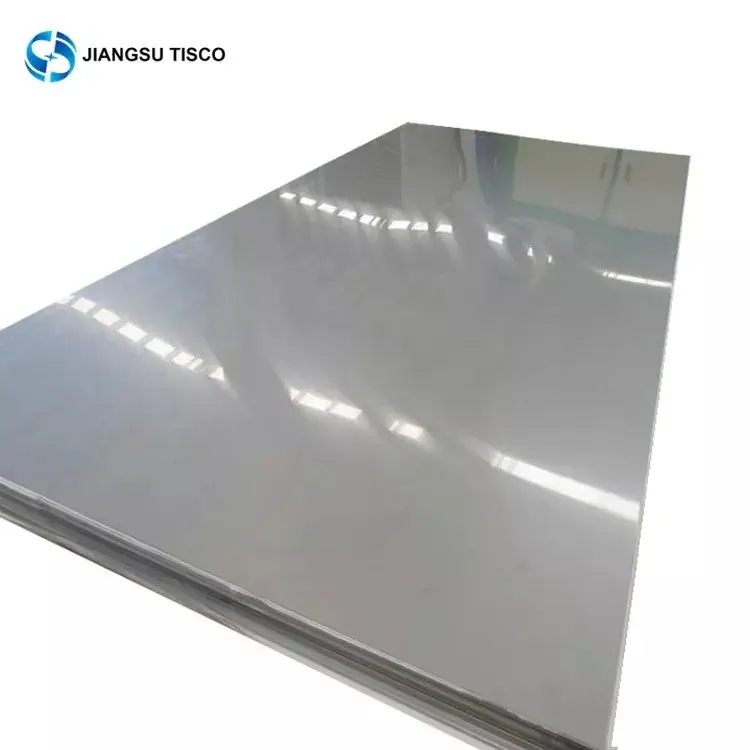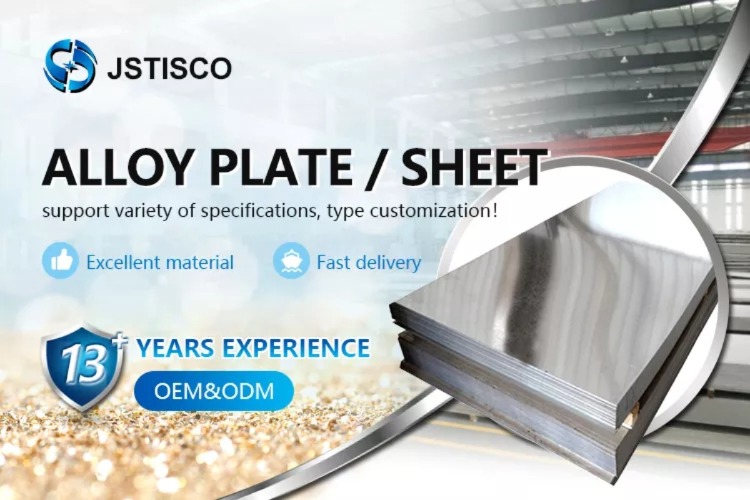Hastelloy c 276 plate
Hastelloy c 276 plate is a tungsten-containing nickel-chromium-molybdenum alloy that is considered a universal corrosion-resistant alloy due to its extremely low silicon-carbon content. Mainly resistant to wet chlorine, various oxidizing chlorides, chlorinated salt solutions, sulfuric acid, and oxidizing salts, and have good corrosion resistance in low temperature and medium temperature hydrochloric acid. Therefore, in the past three decades, it has been widely used in harsh corrosive environments, such as chemical, petrochemical, flue gas desulfurization, pulp and paper, environmental protection, and other industrial fields.
Basic performance of hastelloy c 276 plate
Corrosion resistance
This alloy has the following properties:
①In the state of oxidation and reduction, it has excellent corrosion resistance to most corrosive media.
②It has excellent resistance to pitting corrosion, crevice corrosion, and stress corrosion. The higher content of Mo and Cr makes the alloy resistant to chloride ion corrosion, and the W element further improves the corrosion resistance. At the same time, hastelloy c 276 plates are one of the only materials resistant to the corrosion of wet chlorine gas, hypochlorite, and chlorine dioxide solutions, and have significant resistance to high-concentration chloride salt solutions such as ferric chloride and cupric chloride. Corrosion resistance. It is suitable for sulfuric acid solutions of various concentrations and is one of the few materials that can be used in hot concentrated sulfuric acid solutions.
Mechanical behavior
Tensile strength: σb≥730Mpa, elongation: δ≥40%, hardness: HRB≤100.
The hot forming of hastelloy c 276 plate is immediately annealed at 1150°C and quenched with water. Cold deformation of hastelloy c 276 plate will increase its strength.
Hastelloy c 276 plate has similar formability to ordinary austenitic stainless steel. However, because it is stronger than ordinary austenitic stainless steel, there will be greater stress during cold forming. In addition, the work hardening rate of this material is much faster than that of ordinary stainless steel, so in the extensive cold-forming process, halfway annealing is required.
Physical properties
The physical properties of hastelloy c 276 plate are as follows:
Material composition: 57Ni-16Cr-16Mo-5Fe-4W-2.5Co*-1Mn*-0.35V*-0.08Si*-0.01C* * is the maximum a margin
Executive standards: UNS N10276, ASTM B575, ASME SB575, DIN/EN 2.4819
Density: 8.90g/cm3
Welding and heat treatment of hastelloy c 276 plate
The welding performance of hastelloy c 276 plate is similar to that of ordinary austenitic stainless steel. Before using a welding method to weld C-276, measures must be taken to minimize the corrosion resistance of the weld and heat affected zone, such as the tungsten electrodes. Gas-shielded welding (GTAW), gas metal arc welding (GMAW), submerged arc welding, or some other welding method that minimizes the loss of corrosion resistance of the weld and heat-affected zone. However, it is not suitable for welding methods such as oxyacetylene welding which may increase the carbon content or silicon content of the material weld and heat-affected zone. Regarding the selection of welded joints, you can refer to the successful experience of hastelloy c 276 plate welded joints in the ASME Boiler and Pressure Vessel Code. It is best to use machining methods for welding grooves, but machining will cause work hardening, so it is necessary to grind the machined grooves before welding. Suitable heat input speed should be used during welding to prevent thermal cracking.
In most corrosive environments, hastelloy c 276 plate can be used in the form of weldments. However, in very harsh environments, C-276 materials and weldments should be solution heat treated to obtain the best corrosion resistance. The welding of hastelloy c 276 plate can choose itself as a welding material or filler metal. If it is required to add certain ingredients to the weld of hastelloy c 276 plate, like other nickel-based alloys or stainless steel, and these welds will be exposed to a corrosive environment, then the electrode or wire used for welding requires the Metal corrosion resistance equivalent performance.
The solution heat treatment of hastelloy c 276 plate material includes two processes: (1) heating at 1040℃~1150℃; (2) rapidly cooling to a black state (about 400℃) within two minutes so that the treated material has very good properties. Good corrosion resistance. Therefore, it is ineffective to perform stress relief heat treatment only on hastelloy c 276 plate. Before the heat treatment, clean the oil and other dirt on the surface of the alloy that may produce carbon during the heat treatment. The surface of hastelloy c 276 plate will produce oxides during welding or heat treatment, which will reduce the Cr content in the alloy and affect the corrosion resistance, so the surface should be cleaned. You can use a stainless steel wire brush or grinding wheel, then immerse it in a mixture of nitric acid and hydrofluoric acid in an appropriate proportion for pickling, and finally rinse it with clean water.
Post time: Oct-31-2022

